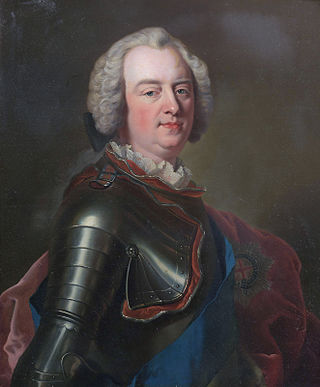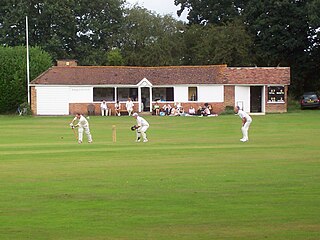
The earliest definite reference to the sport of cricket is dated Monday, 17 January 1597. It is a deposition in the records of a legal case at Guildford, Surrey, regarding usage of a parcel of land. John Derrick, a coroner, testified that he had played cricket on the land when he was a boy in about 1550. Derrick's testimony is confirmation that the sport was being played by the middle of the 16th century, but its true origin is unknown. All that can be said with a fair degree of certainty is that its beginning was earlier than 1550, probably somewhere in south-east England within the counties of Kent, Sussex and Surrey. There have been suggestions that it can be traced to Flemish immigrants then resident in the area. The origin of the word cricket could derive from the Flemish word krick(-e), meaning a stick. Unlike other games with batsmen, bowlers and fielders, such as stoolball and rounders, cricket can only be played on relatively short grass, especially as the ball was delivered along the ground until the 1760s. Forest clearings and land where sheep had grazed would have been suitable places to play.

In the 1772 English cricket season, it became normal practice to complete match scorecards and there are surviving examples from every subsequent season. Scorecards from 1772 have been found for three eleven-a-side matches in which the Hampshire county team played against an England team, and for one top-class single wicket match between Kent and Hampshire. The three Hampshire v England matches have been unofficially recognised by certain sources as first-class, although no such standard existed at the time. Prior to 1772, only four scorecards have survived, the last from a minor match in 1769.

White Conduit Fields in Islington was an early venue for cricket and several major matches are known to have been played there in the 18th century. It was the original home of the White Conduit Club, forerunner of Marylebone Cricket Club (MCC). Later it was used by The Islington Albion Cricket Club, who played their last game at the ground in 1834. Maps from the time show that the cricket field was a few hundred metres north of the White Conduit House, in the land surrounding the modern Richmond Crescent, and paintings suggest it was also possibly on the adjacent field to the south at the modern Barnard Park.
William Bedle was an English cricketer who played for Dartford Cricket Club and Kent county cricket teams in the first quarter of the 18th century. With the possible exception of Charles Lennox, 1st Duke of Richmond, Bedle is the earliest known accomplished player, certainly the earliest who is renowned solely for his expertise as a player. He was born in Bromley but lived most of his life near Dartford, where he was a wealthy farmer and grazier.
The 1741 English cricket season was the 45th cricket season since the earliest recorded eleven-a-side match was played. Details have survived of nine significant matches, including the first known appearance of Slindon Cricket Club. The earliest known tie in an eleven-a-side match occurred.
Events in world sport through the years 1726 to 1730.
A variety of Kent county cricket teams played matches from the early 18th century until the formation of the original county club in 1842. The county's links to cricket go back further with Kent and Sussex generally accepted as the birthplace of the sport. It is widely believed that cricket was first played by children living on the Weald in Saxon or Norman times. The earliest known organised match was held in Kent in around 1611 and the county was always at the forefront of cricket's development through the growth of village cricket in the 17th century to representative matches in the 18th. A Kent team took part in the earliest known inter-county match, which was played on Dartford Brent in 1709.
County cricket teams representing Middlesex have been traced back to the 18th century, although for long periods the county was secondary to the London Cricket Club which played at the Artillery Ground. Middlesex teams played at various grounds throughout what is now the Greater London area. Islington and Uxbridge were often used but home matches were also played on Kennington Common and in Berkshire. Middlesex teams were less frequent in the 19th century until 1859 when the Walker family of Southgate became involved in county cricket.
Hampshire county cricket teams have been traced back to the 18th century but the county's involvement in cricket goes back much further than that. Given that the first definite mention of cricket anywhere in the world is dated c.1550 in Guildford, in neighbouring Surrey, it is almost certain that the game had reached Hampshire by the 16th century.
The 1742 English cricket season was the 46th cricket season since the earliest recorded eleven-aside match was played. Details have survived of ten significant matches, including two famous matches London and Slindon in September.
The 1743 English cricket season was the 47th cricket season since the earliest recorded eleven-a-side match was played. Details have survived of 18 eleven-a-side and three single wicket matches.
The 1745 English cricket season was the second season following the earliest known codification of the Laws of Cricket.

Hadlow Cricket Club was one of the early English cricket clubs, formed in the early to mid eighteenth century. Hadlow is a village in the Medway valley near Tonbridge in Kent.
Sports became increasingly popular in England and Ireland through the 17th century and there are several references to cricket and horse racing, while bare-knuckle boxing was revived. The interest of gamblers in these sports gave rise to professionalism. The first known attempts to organise football took place in Ireland.
Cricket must have reached Hertfordshire by the end of the 17th century. The earliest reference to cricket in the county is dated 1732 and is also the earliest reference to Essex as a county team. On Thursday, 6 July 1732, a team called Essex & Hertfordshire played London Cricket Club in a first-class match at Epping Forest "for £50 a side". The result is unknown.
Events in world sport through the years 1731 to 1735.
Events in world sport through the years 1766 to 1770.
In English cricket, the years from 1751 to 1775 are notable for the rise of the Hambledon Club and the continuing spread of the sport across England. The Laws of Cricket underwent a re-codification in 1775, including the introduction of the leg before wicket rule and the addition of the third stump to the wicket.
In 1726, a newspaper report named the players in a cricket match, the first time this ever happened. The players concerned were Perry of London and Piper of Hampton, who played in what is the sport's earliest known single wicket match. In addition, brief reports of two eleven-a-side matches have survived. The main story of the year, as in some earlier seasons, concerns cricket's relationship with the law, and once again the issue was non-payment of gambling debts.



